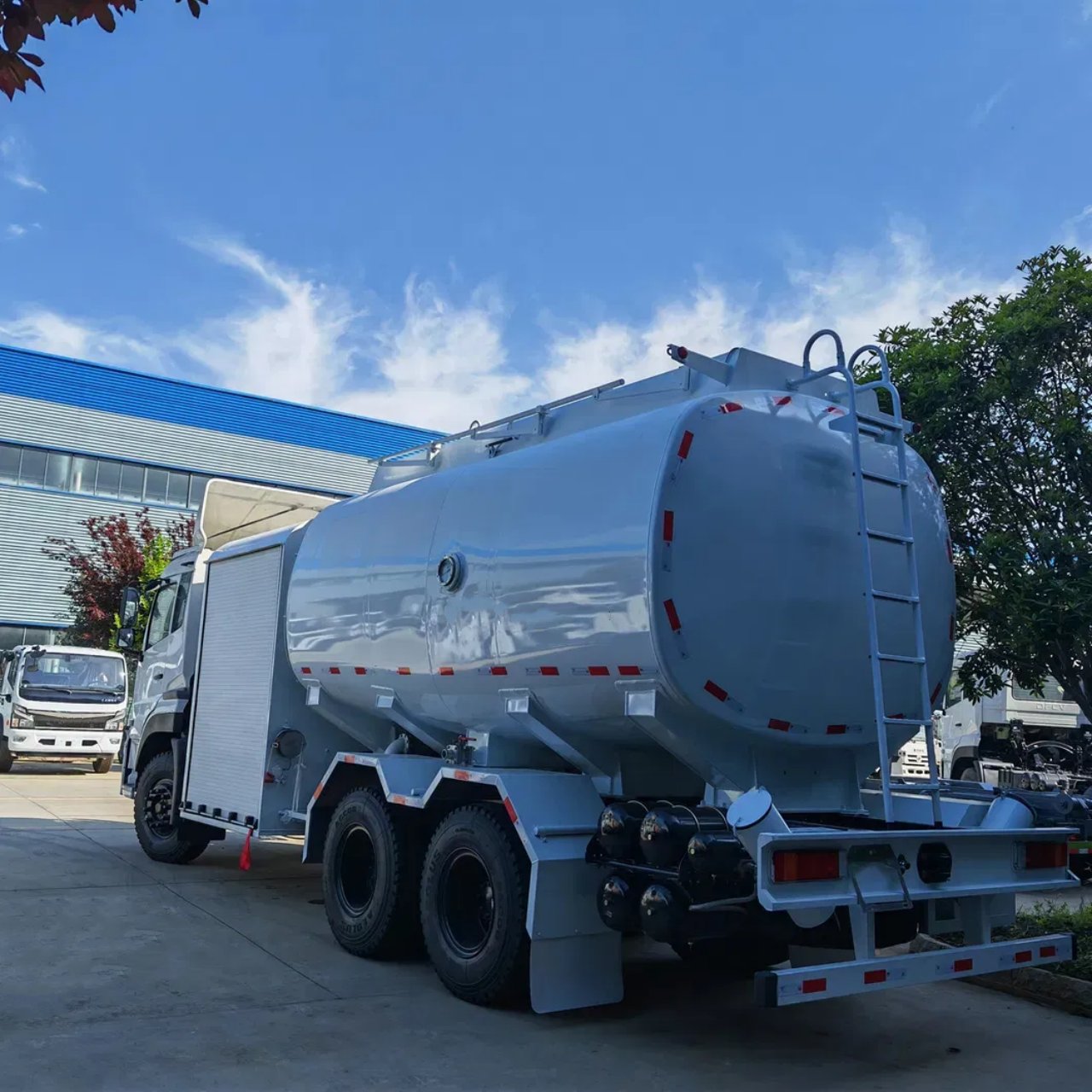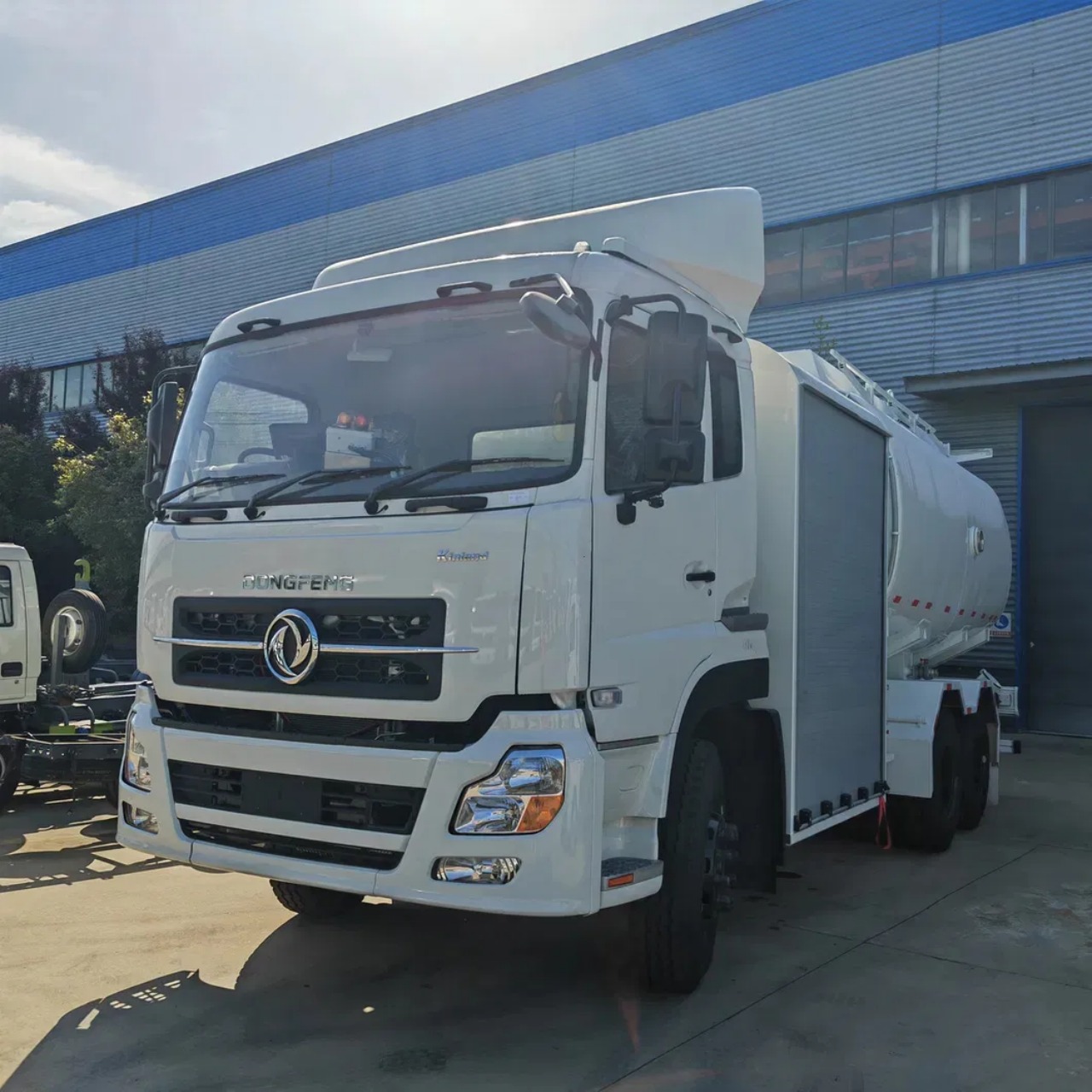Aviation gasoline, commonly known as Avgas, is a specialized fuel used in piston-engine aircraft. Unlike jet fuel, which powers turbine engines, Avgas is specifically formulated to meet the high-performance demands of small aircraft engines. To ensure the safe, efficient, and accurate delivery of this fuel to aircraft, specialized vehicles called Avgas fuel trucks are used. These trucks are an essential part of airport ground support equipment, playing a crucial role in the aviation industry’s daily operations. But what exactly is an Avgas fuel truck, how does it work, and why is it different from other types of fuel transport vehicles?
Understanding Avgas
Before diving into the specifics of Avgas fuel trucks, it’s important to understand what Avgas is. Avgas is a high-octane aviation gasoline primarily used in spark-ignited internal combustion engines in aircraft. The most common type is Avgas 100LL (Low Lead), which has a high octane rating (around 100) and contains a small amount of tetraethyl lead to prevent engine knocking.
Avgas is very different from automotive gasoline (petrol) or jet fuel (Jet-A or Jet-A1). It is more refined and has stricter quality and safety requirements due to the extreme conditions and performance demands placed on aircraft engines.
What is an Avgas Fuel Truck?
An Avgas fuel truck is a mobile fueling unit designed specifically to transport and dispense aviation gasoline to piston-engine aircraft. It combines the function of a storage tank, a pump system, and a filtration and metering unit, all mounted on a truck chassis. These trucks are a mobile alternative to fixed refueling stations and are often used at general aviation airports, small regional airports, air shows, and remote airfields where infrastructure may be limited.
Avgas fuel trucks are built to meet rigorous aviation fueling standards and often require special certification and handling procedures. Their design emphasizes fuel purity, safety, and operational efficiency.
Key Components of an Avgas Fuel Truck
1. Tank
The tank is typically made of aluminum or stainless steel, chosen for its compatibility with Avgas and corrosion resistance. Tank capacities vary widely depending on the truck’s size and the operational needs of the airport. Common sizes range from 1,000 to 5,000 gallons.
The tank is designed with internal baffles to minimize sloshing during transit, ensuring stability and safety. It also includes pressure and vacuum relief valves to accommodate temperature changes and prevent rupture.
2. Pump and Dispensing System
The pump system is responsible for moving fuel from the tank to the aircraft. Avgas fuel trucks use either centrifugal or positive displacement pumps, typically powered by a PTO (power take-off) from the truck’s engine or by a separate auxiliary engine.
The dispensing system includes hoses, reels, and nozzles—usually aviation-grade equipment designed to prevent static electricity buildup and contamination. The hose length can range from 50 to 100 feet, allowing flexible operation on the tarmac.
3. Filtration and Water Separation
Maintaining fuel purity is critical in aviation. Avgas fuel trucks are equipped with filter/separator systems to remove water, dirt, and particulate contaminants from the fuel before it reaches the aircraft. These systems are regularly maintained and monitored with differential pressure gauges and water-detecting sensors.
4. Metering and Gauging
To ensure precise fueling, Avgas trucks feature digital or mechanical metering systems that track fuel volume during dispensing. These meters are calibrated and certified according to aviation fueling standards. Sight glasses or transparent sampling ports are also included for visual inspection of the fuel.
5. Grounding and Bonding Systems
Static electricity poses a serious ignition risk during fuel transfer. Avgas trucks are equipped with grounding reels and bonding cables that connect the truck to the aircraft and to the ground before fueling begins, equalizing electrical potential and preventing sparks.
6. Fire Safety Equipment
Due to the flammable nature of Avgas, these trucks are required to carry fire extinguishers, emergency shut-off valves, and often fire suppression systems. The design and operation of these safety features are regulated by aviation authorities and local fire codes.
Applications and Usage
Avgas fuel trucks are primarily used in general aviation, which includes small aircraft used for business, recreation, agriculture, and flight training. Some of the main users and scenarios include:
- Regional airports without permanent fueling infrastructure
- Flight schools need to refuel training aircraft frequently
- Aerial survey and agriculture companies
- Emergency services like air ambulances in remote locations
- Military and defense applications for piston-powered aircraft
- Airshows and aviation events where mobile fueling is required
Their mobility allows airports and operators to deliver fuel directly to parked aircraft anywhere on the tarmac, improving operational efficiency and reducing turnaround time.
Safety and Regulatory Compliance
Avgas fuel trucks must comply with a range of safety and quality regulations. In the United States, they are typically governed by:
- NFPA 407: Standard for Aircraft Fuel Servicing
- EPA and DOT regulations for hazardous materials transport
- ATA Specification 103 for jet fuel quality and handling (also relevant for Avgas operations)
- OEM manufacturer guidelines and ICAO (International Civil Aviation Organization) standards
Drivers and operators must be specially trained in aviation fuel handling, including emergency procedures, contamination detection, and grounding practices.
Differences from Jet Fuel Trucks
While Avgas and jet fuel trucks may look similar on the surface, they are engineered differently. Jet fuel trucks handle Jet-A or Jet-A1, which are kerosene-based and used in turbine engines. Key differences include:
- Material Compatibility: Avgas is more volatile and requires specific tank materials.
- Filtration Requirements: Avgas filters differ due to particle size and water separation standards.
- Operational Use: Avgas trucks usually serve small piston aircraft, while jet trucks handle larger commercial or military aircraft.
- Nozzle Types: Avgas uses smaller over-wing nozzles, while jet fuel often uses pressure fueling nozzles for under-wing systems.
Conclusion
An Avgas fuel truck is a highly specialized vehicle designed to transport, filter, and deliver aviation gasoline to piston-engine aircraft safely and efficiently. It combines advanced engineering, rigorous safety features, and precise metering systems to meet the stringent standards of aviation fueling. As general aviation continues to play a vital role in transportation, training, and emergency services, Avgas fuel trucks remain indispensable to ensuring that small aircraft stay operational and ready to fly.
Whether serving a bustling regional airport or a remote airstrip, these trucks ensure that the sky remains open for the light aircraft that rely on Avgas—one tank at a time.





